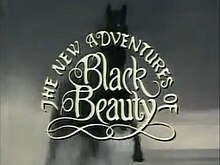Chapter 5: A Fair Start
byChapter 5: A Fair Start begins with Black Beauty settling into his new home under the care of John Manly, a dedicated coachman who resides near the stables with his family. On the morning following Beauty’s arrival, John meticulously grooms him, ensuring every inch of his coat is polished, which earns the approval of Squire Gordon. To evaluate Beauty’s temperament and ability, the Squire instructs John to take him for a ride across the estate. With deliberate care, John fits Beauty with tack that balances comfort and control, and their ride starts gently before progressing to a spirited canter across the common. Beauty proves composed and responsive, even as they pass carts and gunfire, earning John’s quiet admiration. Their bond begins to form not just through performance but through mutual respect, signaling the start of a rewarding partnership.
Upon their return, Beauty meets the Squire and his wife, who both show interest in the horse’s demeanor and abilities. John expresses confidence in Beauty’s good nature and strength, and the Squire decides to ride him personally the following day. After experiencing Beauty’s smooth pace and balanced temperament firsthand, the Squire is thoroughly pleased. As they consider what to name the horse, Mrs. Gordon suggests “Black Beauty,” a name that suits both his appearance and his composed, elegant nature. The Squire agrees, noting the name’s gentle and fitting tone. It marks not only the naming of the horse but also a symbolic beginning of a life that promises fair treatment and dignity.
Later, John shares the new name with James, another stable hand, remarking on its sensible simplicity compared to the ornate names sometimes given to horses. Their conversation drifts to the subject of another horse, Rob Roy, who tragically died during a hunt, and it is revealed that he was Beauty’s brother. This news stirs an emotional reflection in Beauty, who recognizes the loss of connection that often comes with being sold or moved. He muses on how horses, though related, may never know or remember their kin due to the transient nature of their lives under human ownership. This moment subtly introduces themes of displacement and the emotional intelligence horses can possess, which recur throughout the book.
As Beauty continues to adjust to his new surroundings, his thoughts reveal a deepening trust in John, whose gentle care fosters a sense of safety. Every routine—from grooming to feeding and exercise—is handled with thoughtfulness, reinforcing the values of respect and understanding between animals and humans. Beauty’s calmness is not innate alone but nurtured by the consistency of his environment. The chapter portrays a hopeful beginning in contrast to the hardships Beauty will later face, emphasizing how good treatment lays the groundwork for loyalty and performance. It’s a quiet, humane philosophy embodied in John’s every action.
What makes this chapter resonate is not only the introduction of Beauty’s name but the tone of mutual appreciation between man and animal. John doesn’t view Beauty as a tool but as a partner, and that distinction becomes foundational in the horse’s evolving sense of identity. This early positive experience will later serve as a benchmark for Beauty when future circumstances grow harsher. Readers are invited to notice how deeply a horse’s wellbeing is tied not just to food and shelter but to how he is understood and handled. Through these moments, Anna Sewell subtly advocates for a model of care that values empathy over dominance.
Overall, this chapter sets the tone for a journey defined by how horses are treated and regarded by those who work with them. It introduces a sense of optimism and dignity that contrasts with later chapters, enhancing the emotional weight of future losses. Through measured storytelling and simple yet meaningful interactions, Sewell continues to build her argument that animals, like people, respond best when met with fairness, respect, and genuine compassion.

